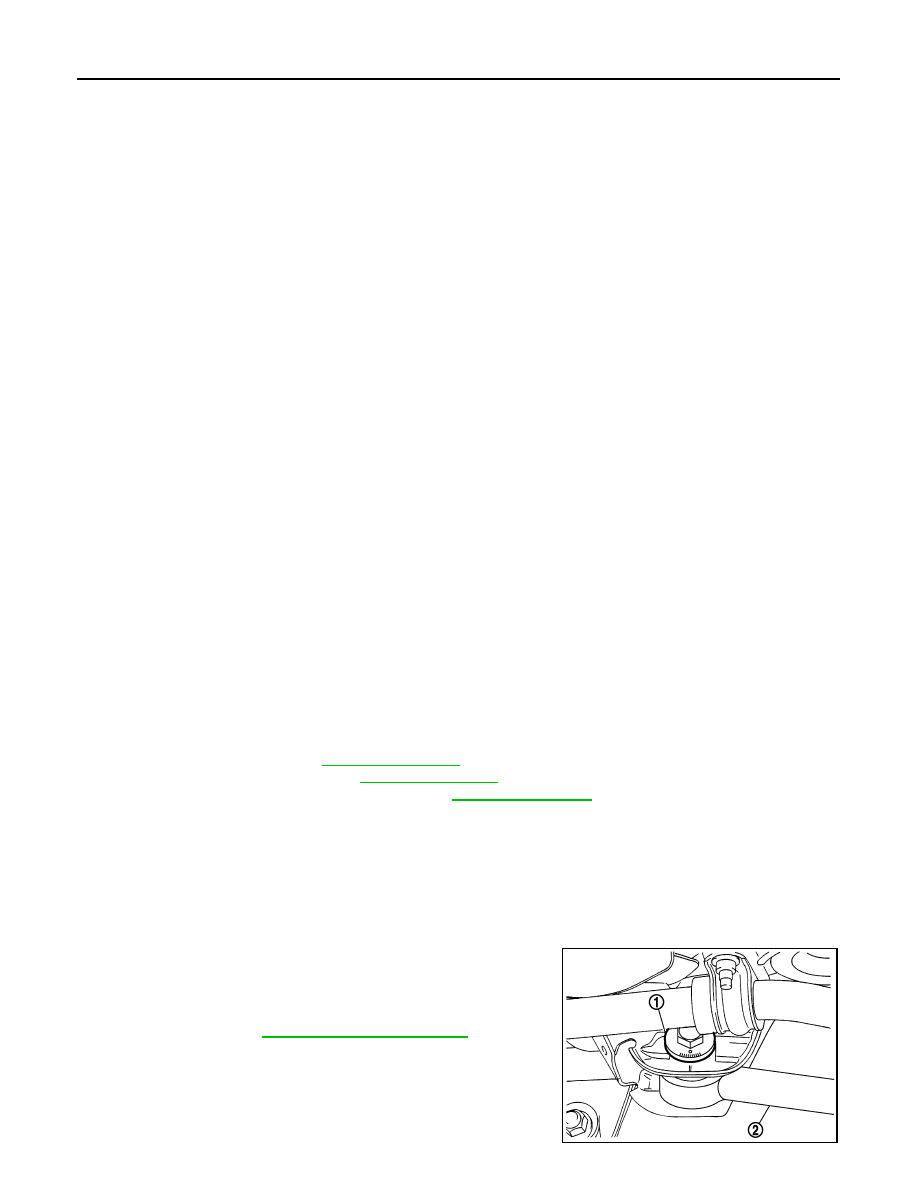Content .. 1062 1063 1064 1065 ..
Infiniti G37 Coupe. Manual - part 1064

RSU-6
< ON-VEHICLE MAINTENANCE >
WHEEL ALIGNMENT
WHEEL ALIGNMENT
Wheel Alignment Inspection
INFOID:0000000001671749
Description
• Measure wheel alignment under unladen conditions.
NOTE:
“Unladen conditions” means that fuel, engine coolant, and lubricant are full. Spare tire, jack, hand tools and
mats are in designated positions.
General Information and Recommendations
• A four-wheel thrust alignment should be performed.
- This type of alignment is recommended for any NISSAN/INFINITI vehicle.
- The four-wheel “thrust” process helps ensure that the vehicle is properly aligned and the steering wheel is
centered.
- The alignment rack itself should be capable of accepting any NISSAN/INFINITI vehicle.
- The rack should be checked to ensure that it is level.
• Make sure the machine is properly calibrated.
- Your alignment equipment should be regularly calibrated in order to give correct information.
- Check with the manufacturer of your specific equipment for their recommended Service/Calibration Sched-
ule.
Alignment Process
IMPORTANT:
Use only the alignment specifications listed in this Service Manual.
• When displaying the alignment settings, many alignment machines use “indicators”: (Green/red, plus or
minus, Go/No Go). Do not use these indicators.
- The alignment specifications programmed into your machine that operate these indicators may not be cor-
rect.
- This may result in an ERROR.
• Some newer alignment machines are equipped with an optional “Rolling Compensation” method to “com-
pensate” the sensors (alignment targets or head units). Do not use this “Rolling Compensation” method.
- Use the “Jacking Compensation Method”. After installing the alignment targets or head units, raise the vehi-
cle and rotate the wheels 1/2 turn both ways.
- See Instructions in the alignment machine you're using for more information on this.
Preliminary Check
Check the following:
• Tires for improper air pressure and wear.
• Road wheels for runout. Refer to
• Wheel bearing axial end play. Refer to
.
• Ball joint axial end play of suspension arm. Refer to
• Shock absorber operation.
• Each mounting point of axle and suspension for looseness and deformation.
• Each of front lower link, rear lower link, radius rod, rear suspension member, suspension arm and shock
absorber for cracks, deformation, and other damage.
• Vehicle height (posture).
ADJUSTMENT
Camber
If outside the standard value, adjust with adjusting bolt (1) in front
lower link (2).
CAUTION:
After adjusting camber, be sure to check toe-in.
Standard
Camber: Refer to
.
JPEIB0061ZZ